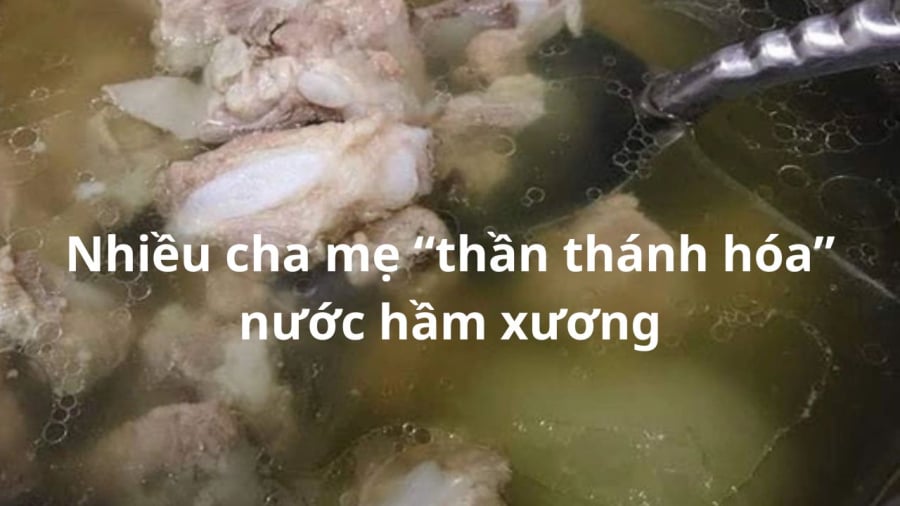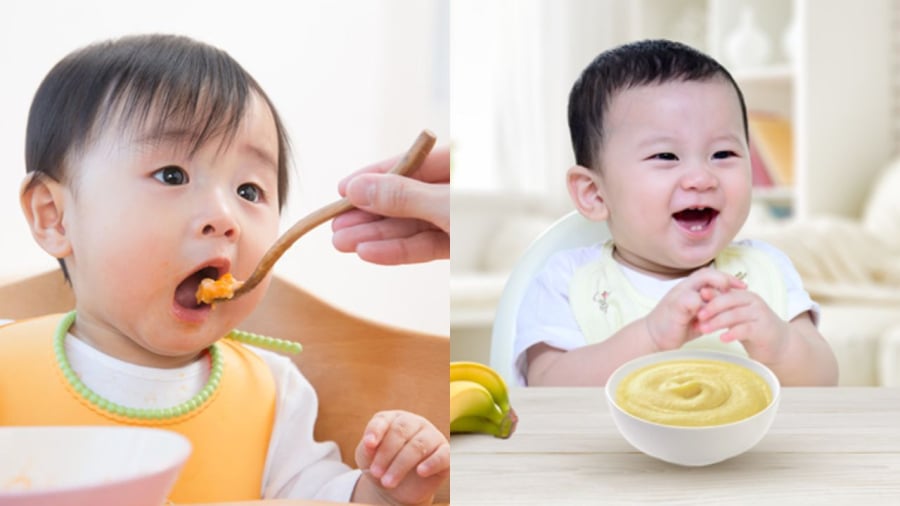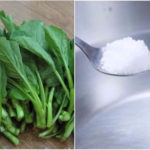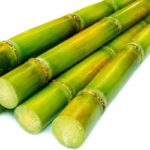Bone broth is often used by many parents to cook porridge or soup for their children. Some people believe that bone broth provides good nutrition for children to grow tall. However, many children who regularly consume this bone broth are still short and weak.
Bone broth is not nutritious and may even be harmful.
Bone broth does not provide as much nutrition as many people think. Even the belief that “eating bones builds bones” is incorrect. On the contrary, if children consume a lot of porridge or soup made from bone broth without supplementing with other foods, they may face the risk of lacking various nutrients.
Bone broth is mainly composed of fat and lacks important nutrients such as protein, vitamins, and minerals. When children consume bone broth, they are lacking in nutrition and may have difficulty digesting the fat from animal bones. Therefore, regularly consuming or consuming concentrated bone broth can make children more prone to bloating, diarrhea, or loose stools.

Bone broth is not as good as many parents think
In particular, bones contain inorganic calcium, which cannot be absorbed by the child’s body, no matter how well the broth is cooked. Protein also does not dissolve in water, so it is not present in high amounts in bone broth. In 100 mg of bone broth, there is only about 0.6 g of protein, which meets only 1/30 of a child’s protein needs. In 100 ml of bone broth, there is an estimated 33.5 milligrams of calcium.
The aroma of bone broth is due to nitrogen, which can sometimes make it easier for children to eat, but it contains less protein, calcium, and other nutrients. Therefore, if bone broth is used to cook porridge for children, they may be at risk of severe nutrient deficiency.
Nutrition is mainly found in meat, not in bone broth. Hence the saying that it is wise to eat the meat rather than the broth.

Children need to eat a variety of nutrients and avoid consuming too much bone broth
Note when using bone broth for children
You should only use bone broth for children 8 months and older, as younger children who have just started eating solid foods should not be given bone broth as it may affect their digestion.
When using bone broth, be sure to skim off the fat on top. Only use it 1-2 times a week and do not consider it as a necessary part of children’s meals.
Do not cook bone broth for too long, as it can increase the risk of producing harmful substances in the body.
Cook food for children with a variety of ingredients, such as meat, fish, shrimp, and finely chopped vegetables, to help them develop the habit of chewing. If a child eats poorly, has delayed teething, or slow physical development, this can be due to a lack of chewing.
Depending on the age and taste preferences of each child, parents can prepare a variety of foods to ensure that their meals always include the 4 food groups: protein (meat, fish, eggs, shrimp …), fat (oil, fat), carbohydrates (flour, rice), vitamins and minerals (green vegetables, tubers). In addition, these ingredients need to be combined in appropriate amounts to provide sufficient energy and nutrients for the child and aid in digestion and absorption.
In addition to using bone broth or meat broth, parents can also use suitable vegetable broth. When making bone broth for children, it is best to use rib bones, fish bones, or chicken bones instead of spinal bones, as pork spinal bones contain more marrow and fat that are difficult to digest. Each time, only use 2-3 taels of bones to avoid excessive fat content.
You can add purple onions and ginger to bone broth to avoid abdominal discomfort in children.
Uncover the Surprising Health Advantages of Sugarcane Juice
Do you believe in the power of sugarcane juice? From giving your body an energizing natural boost to detoxifying your liver and aiding digestion, this drink offers an array of benefits. Not to mention its ability to help maintain healthy teeth, clear up skin, and combat fatigue. Have you ever wondered what wonders a simple glass of sugarcane juice can do for you?



































